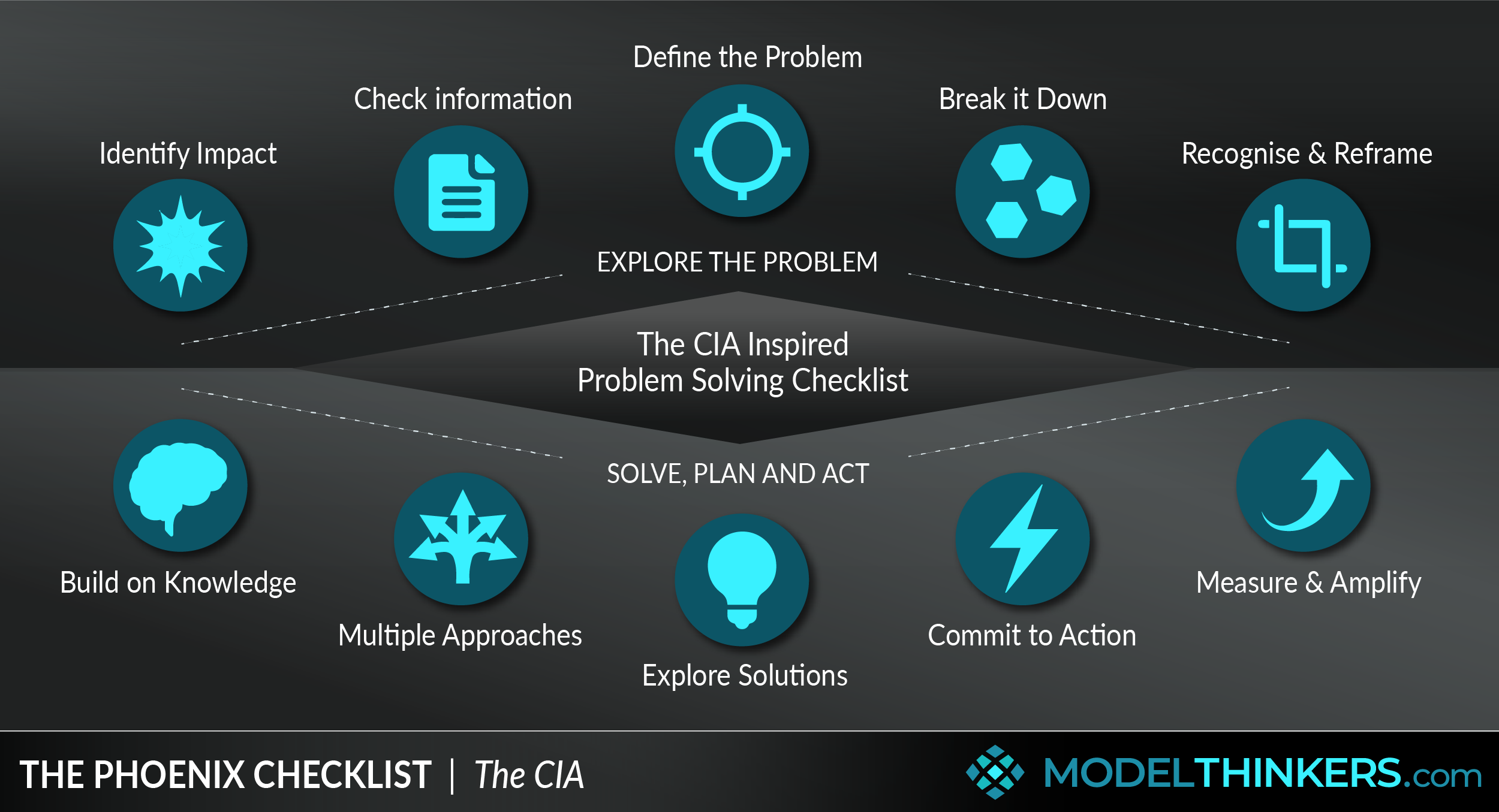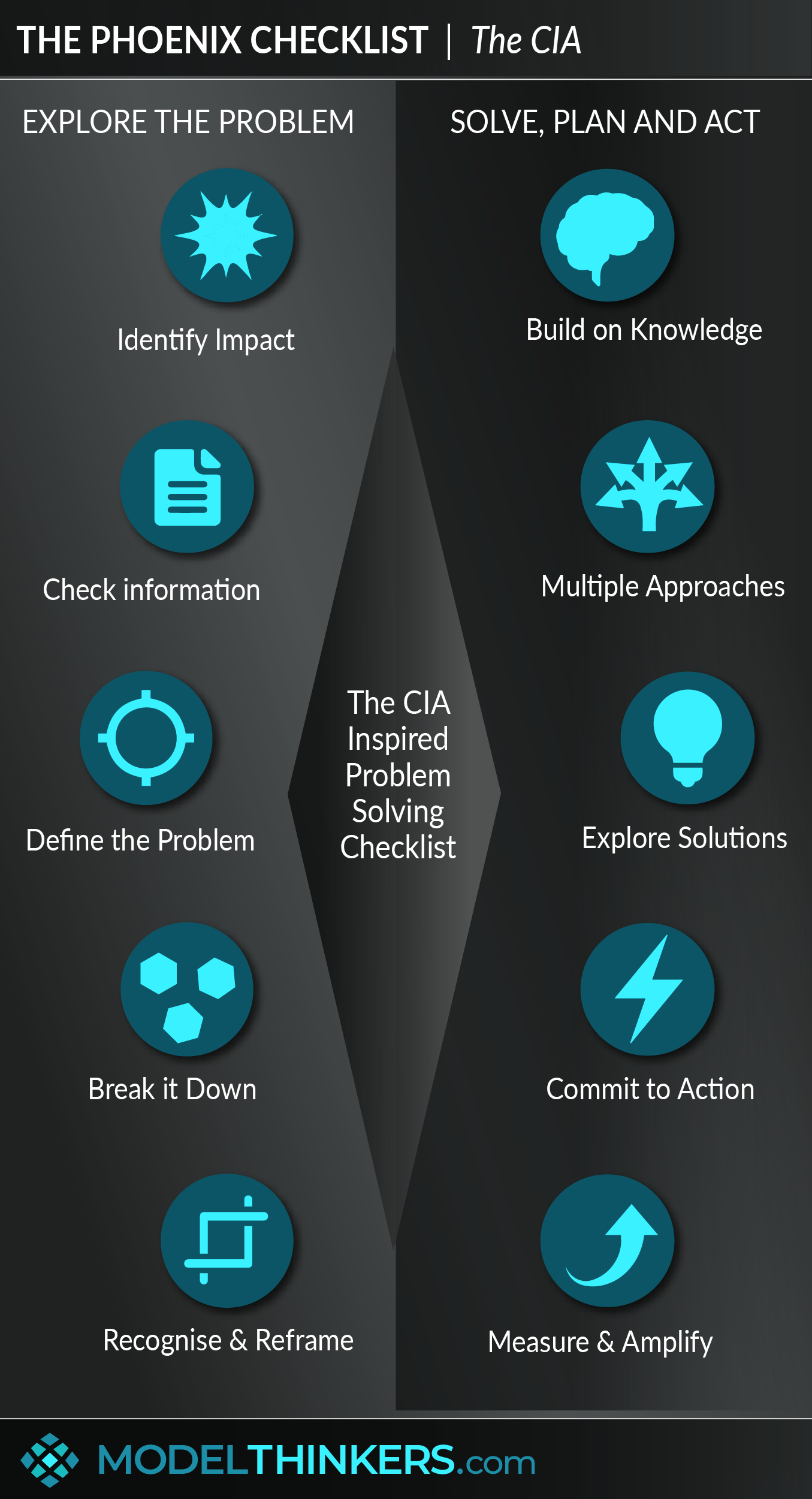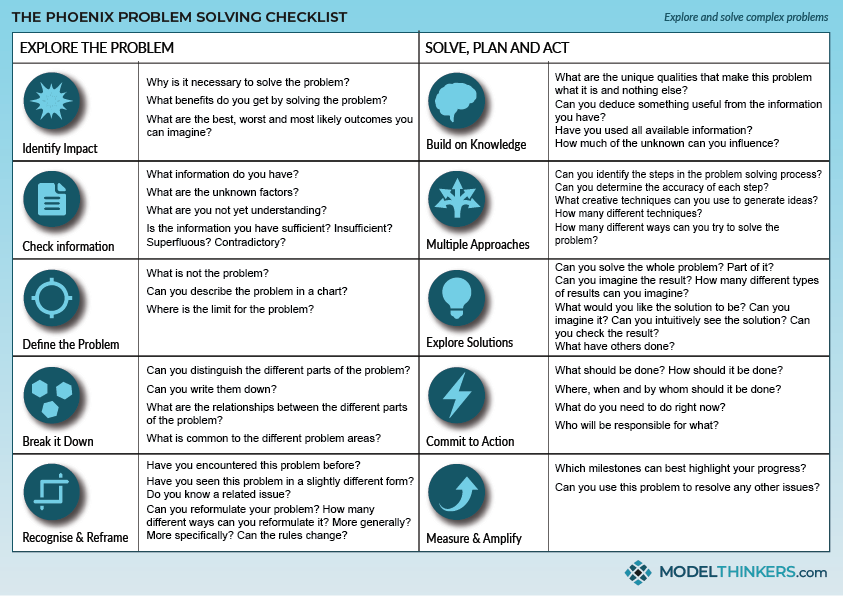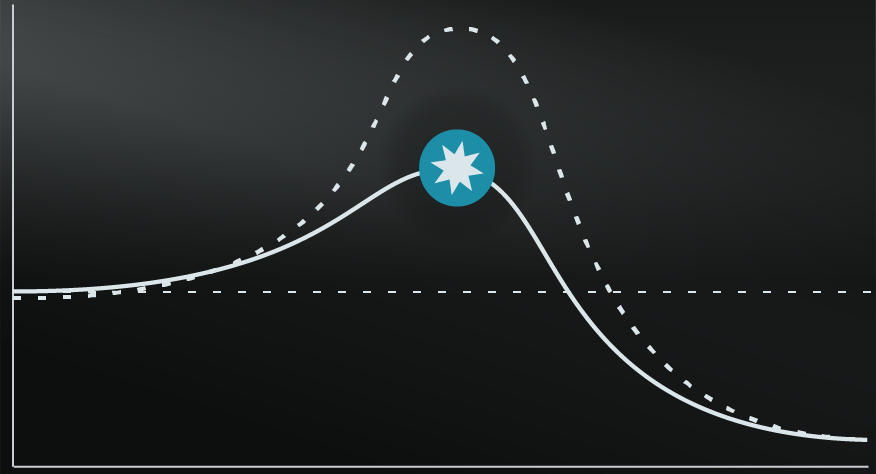

 0 saved
0 saved
 40.1K views
40.1K views








Popularised by prominent ex-spy and creativity author Michael Michalko, this checklist was developed by the CIA to solve complex and difficult problems.
The Phoenix Checklist comprises over 40 questions to help understand and solve complex problems. The questions encourage you to take multiple perspectives on the problem and span topics such as defining the problem; breaking it down; reframing; right through to solving and taking action.
A QUICK NOTE ABOUT OUR REMIX.
The original Phoenix Checklist list of questions was challenging to absorb let alone use — so we’ve taken some liberties with the version below. We’ve still included all of the questions, but we’ve tweaked their order and ‘chunked’ them under key themes to make them more intuitive and actionable.
THE PHOENIX CHECKLIST.
Part 1: Explore the Problem.
|
THEME (Our addition) |
QUESTIONS |
|
Identify the impact. |
|
|
Check the information. |
|
|
Define the problem. |
|
|
Break the problem down. |
|
|
Recognise and reframe the problem. |
|
Part 2: Solve, Plan, and Act.
|
THEME (Our addition) |
QUESTIONS |
|
Build on what you know. |
|
|
Use multiple approaches. |
|
|
Explore solutions. |
|
|
Commit to action. |
|
|
Measure and amplify. |
|
IN YOUR LATTICEWORK.
The Phoenix Checklist covers a lot of ground and has multiple connections to other models. Combine it with the Fishbone/ Ishikawa Diagram as part of a root cause analysis. In terms of problem-solving and taking action, you might want to combine it with Design Thinking for a human-centric perspective; as well as the Cynefin Framework and Agile Methodology to understand and take action in complexity.
Finally, given the number of questions, The Phoenix Checklist surprisingly skips any consideration of cognitive biases which are important considerations in complex problem-solving. You can rectify that by improving this checklist with an awareness of Functional Fixedness, Anchoring, Confirmation Heuristic, and other heuristics.




-
Invest in understanding the problem.
Before jumping to solutions, take time to identify the impact of the problem; check in with your current knowledge and understanding of it; define the scope of the problem; see whether it can be broken down effectively; and recognise and reframe the problem.
-
Work to solve and move to a plan.
When moving to solution mode, start by building on what you currently know; try multiple approaches and processes; explore solutions; commit to action; and be sure to measure and amplify your approach.
-
Download The Phoenix Checklist Canvas below.
Know that you’re likely going to forget this checklist so use our just-in-time canvas which you can download below (members only).
As noted in the overview, the checklist does not consider the role of cognitive biases, which seems like an obvious pitfall in any potential problem-solving approach. Beyond that, it tends to brush over recommendations to use multiple processes and approaches during solution-mode, without suggesting any specific options.
A final criticism we have of this model is that it is unwieldy. We have already chunked and categorised the questions which still might be overwhelming in high-pressure situations and impractical for rapid decision-making.
The problem with spies
The problem with spies is that they don’t tend to publish case studies about how they operate — thus we have no record of this Checklist being used by CIA Operatives. Beyond that, the questions obviously serve as a broader checklist for problems in business and life.
s
The Phoenix Checklist was first popularised via Michael Michalko’s book Thinkertoys: A Handbook of Creative Thinking Techniques.
Michalko worked as an officer in the US Army, a CIA consultant, and led a NATO intelligence team who collaborated with academics to research and categorise inventive-thinking methods. He was often called upon to facilitate CIA think tank sessions with his creative-thinking techniques.
He has since become a prolific author and creativity consultant, supporting businesses to apply creative practices.
 My Notes
My Notes
Oops, That’s Members’ Only!
Fortunately, it only costs US$5/month to Join ModelThinkers and access everything so that you can rapidly discover, learn, and apply the world’s most powerful ideas.
ModelThinkers membership at a glance:






“Yeah, we hate pop ups too. But we wanted to let you know that, with ModelThinkers, we’re making it easier for you to adapt, innovate and create value. We hope you’ll join us and the growing community of ModelThinkers today.”


































































































